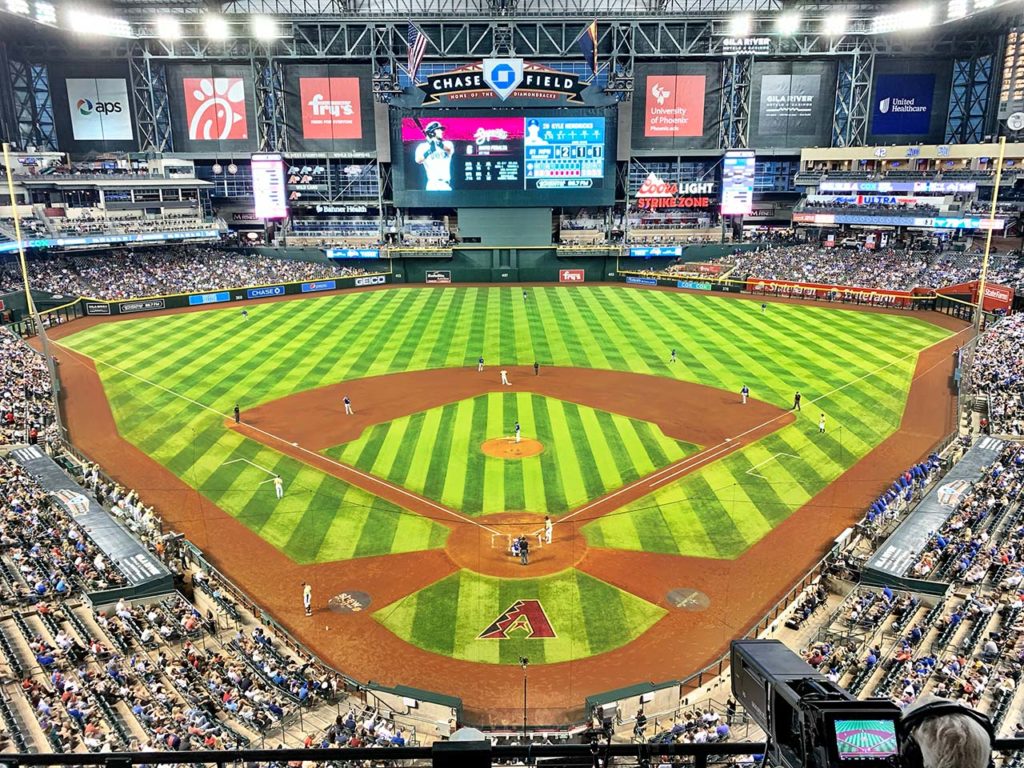
Whether to renovate or build new elsewhere: the Arizona Diamondbacks are facing a huge decision about the future of Chase Field, which is showing its age at a time of rapidly changing venue expectations.
Opening in 1998, Chase Field is a perfectly adequate ballpark, though fans are missing the modern bells and whistles expected from a modern MLB experience. It does, in many ways, feel like a shame that we’re talking about drawbacks to a facility opening just 23 years ago. Yes, Chase Field is still functional: the roof still opens and closes, the air conditioning still cools spectators, and the concession stands serve up some tasty fare.
But everyone expects more from a ballpark these days: teams expect ballparks to anchor real-estate development a la Truist Park and The Battery or Wrigley Field and Wrigleyville, fans expect more than just a nine-inning seat and a hot dog, and sponsors expect a unique way of directly reaching consumers. Oh, and everyone wants a winning team.
So what do you do if you’re the Diamondbacks, operating in a market with other sports teams are offering elevated experiences? With the Phoenix Suns renovating Footprint Center, the Coyotes working on a plan for a new Tempe arena, ASU football operating in a renovated Sun Devil Stadium and State Farm Stadium delivering a quality NFL experience, the Phoenix market is competitive, to say the least. Hence the evaluation of Chase Field as the team’s future home.
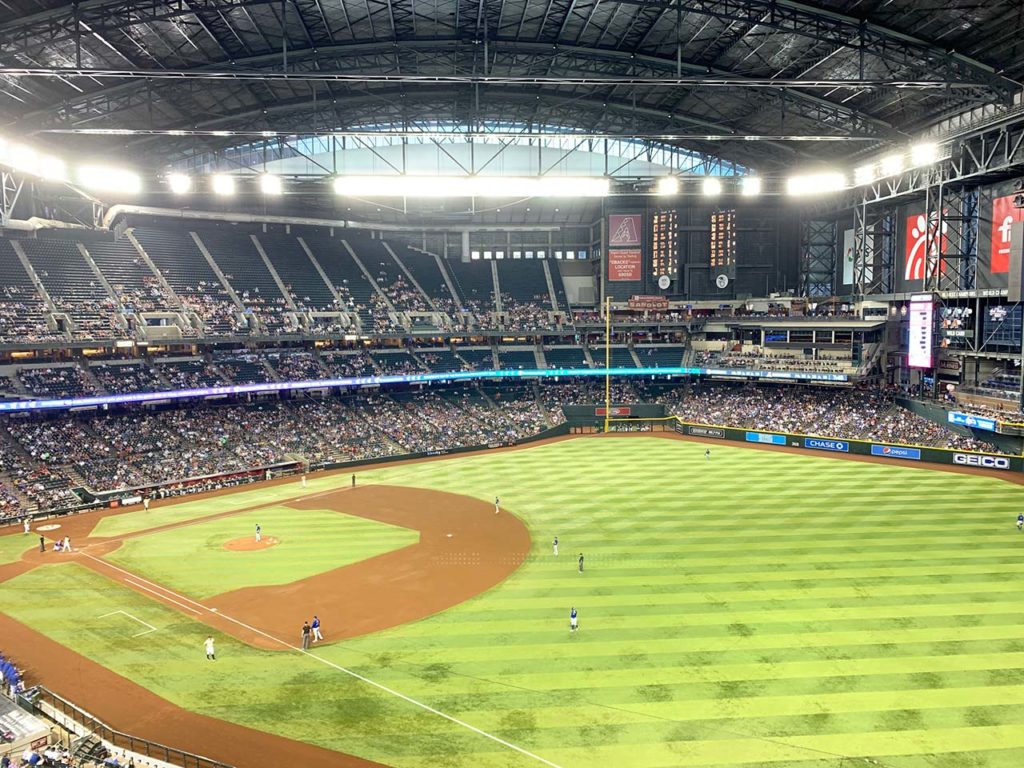
When Chase Field opened in 1998, it was state of the art, sporting the third retractable roof in the majors after Toronto’s Rogers Centre (then operating as SkyDome) and Montreal’s Olympic Stadium. Taking only four minutes to open, the roof is still an engineering marvel. It offered a climate-controlled ballpark experience—essential during the hot Phoenix summers—but the cutting-edge roof did mandate a number of design decisions that affected the overall fan experience. The ballpark’s footprint is huge (there’s some 1.3 million square feet of space), the outside design is not distinctive, and too many seats are in the upper deck, which runs 40 rows in its deepest areas. There are 75 suites, but they are located high above the action on a third level. And despite the sheer amount of square footage available, the concourses are on the narrow side, with lines from popular concession stands clogging the walkways.
Which happens frequently, even when the ballpark is not close to capacity. The Diamondbacks and concessionaire Levy have brought in offerings from local notables, including Gadzooks Enchiladas & Soup, Hungry Hill Sangwiches, Paradise Valley Burger, Danzeisen Dairy milkshakes and ReyGloria’s tamales and street corn. A $2 menu offers ballpark staples like hot dogs, corn dogs (which are surprisingly good), popcorn and soft drinks. You’ll find offerings from local brewer Four Peaks Brewing at many locations. Add to these offerings some local twists like poblano cheesesteaks, green chile tots, Cold Stone Creamery ice cream and festival tacos, and you have a pretty solid concessions lineup.
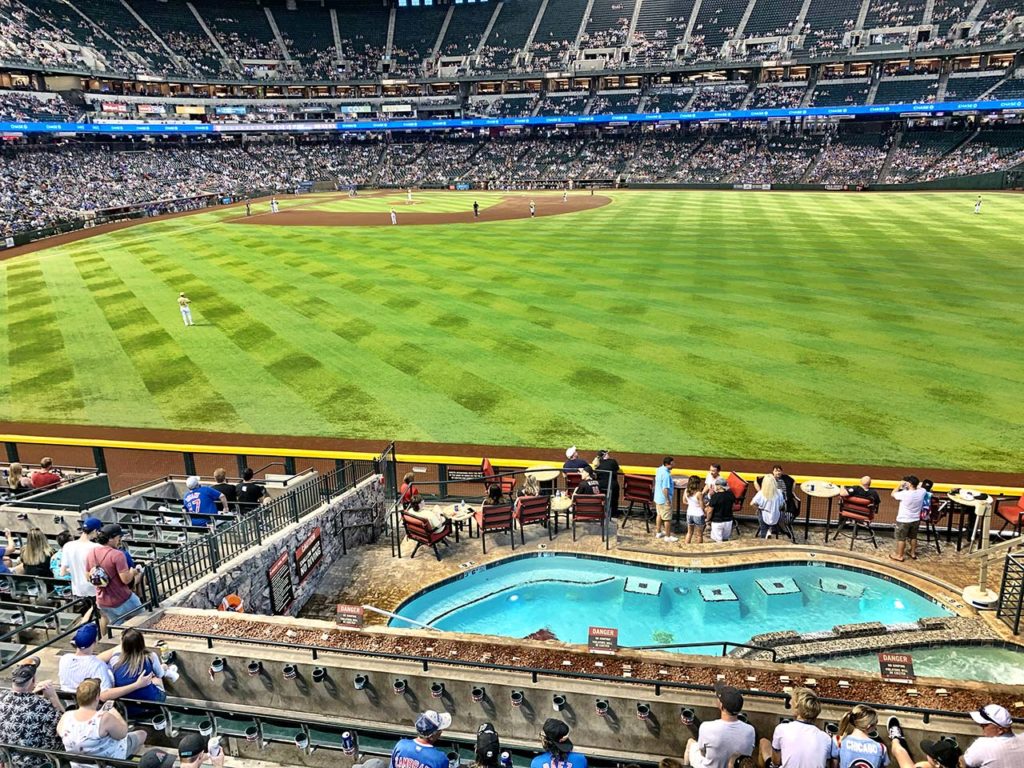
Toss in the legendary outfield swimming pool, a large kids’ area in the left-field corner, a good history museum and a convenient location, plenty of nearby inexpensive parking and a light-rail station directly outside the ballpark, and you have a facility with pretty good bones. There are some spaces that need to be addressed soon, such as the vacant TGI Fridays Front Row restaurant occupying prime real estate in left field, as well as the Game Seven space located outside the ballpark.
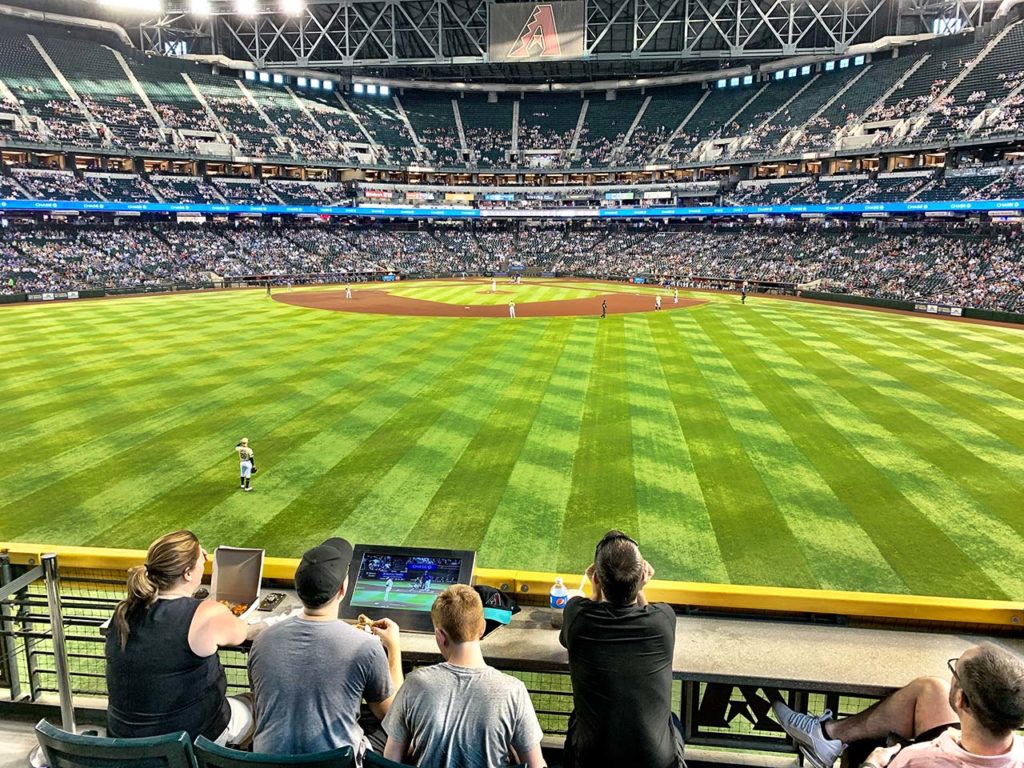
But there some definite issues with Chase Field. As noted, far too much of the seating is on the upper deck, and the steep pitch is definitely a drawback. There’s a shortage of social spaces for fans like us who love wandering around the ballpark during the course of a game. (There are a number of unique spots for groups, however, including the Studio @ 122 suite on the main concourse behind home plate. In addition, there are other private seating areas featuring flat-screen TVs and dedicated food service.) The three-level team store lacks any excitement. The main entry and ticketing area is cluttered, and it can be very tiring to make you way from Point A to Point B; more escalators past those in the entry rotunda would be welcome. And at some point the team will need to invest in basic necessities like new seating.
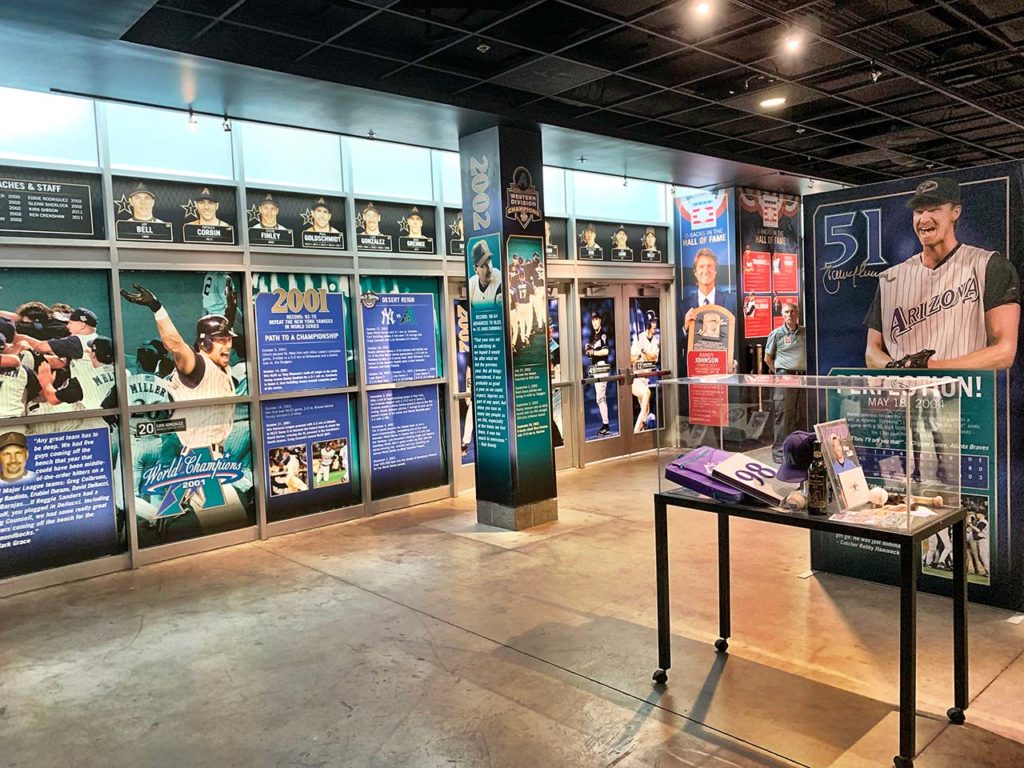
Some of these drawbacks can be addressed by a reimagining of the concourses and new bowl seating, while others, like the layout of the upper deck, represent more of a challenge. There is development happening next to the ballpark, and with the Suns renovating their home and committing to downtown Phoenix, there’s an opportunity for the Diamondbacks to invest in a ballpark-area year-round entertainment district. Any Chase Field reimagining would address upgrades both inside and out.
If an MLB team was searching for a new-ballpark site, Chase Field would already check off a number of requirements: downtown location served by mass transit and freeway access, plenty of space for a variety of offerings, and potential for further development in the area. If it sounds like we think there are some definite business opportunities in a Chase Field upgrade plan, we do. Whatever happens, however, need to be something beyond business as usual. The biggest thing lacking at Chase Field is any sense of pizzazz, something that will draw in fans no matter what the team’s record. Pizzazz draws fans, sells merch and generates interest, and right now the team needs that buzz.
